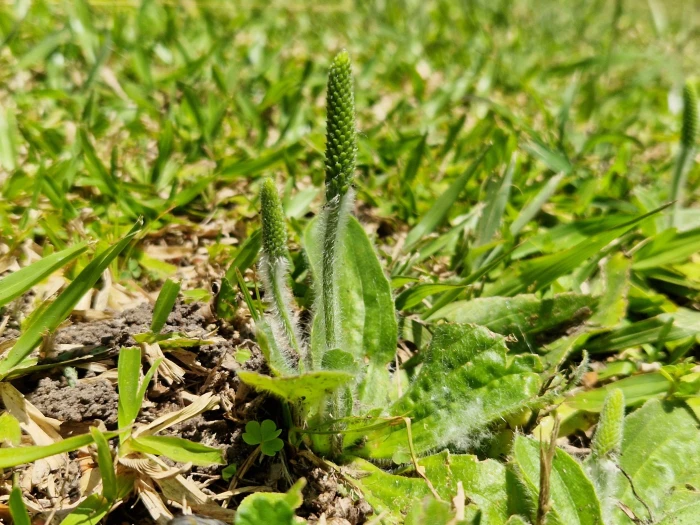Dwarf Plantain
(Plantago pusilla)
Dwarf Plantain (Plantago pusilla)
/
/

© Jens-Christian Svenning
CC BY 4.0
Image By:
© Jens-Christian Svenning
Recorded By:
Copyright:
CC BY 4.0
Copyright Notice:
Photo by: © Jens-Christian Svenning | License Type: CC BY 4.0 | License URL: http://creativecommons.org/licenses/by/4.0/ | Uploader: jcsvenning | Publisher: iNaturalist |
























Estimated Native Range
Climate Requirements for Hamilton, Canada
| This Plant | Your Site | Plant Suitability for Your Location | ||
|---|---|---|---|---|
| • Precipitation | 8" - 64" | 35" | Your precipitation may be insufficient for this plant. Irrigate N" / year. | Irrigate N" / year |
| • High Temp. | 67°F - 98°F | 82°F | Your summer temperatures are normal for this plant. | Excellent |
| • Low Temp. | 7°F - 45°F | 17°F | Your winter temperatures are normal for this plant | Excellent |
This plant should grow well at your location with about N inches per year (Y minutes per month) of irrigation.
Summary
Plantago pusilla, commonly known as Dwarf Plantain, Woolly Indianwheat, Small Plantain, or Woolly Plantain, is an annual herb that thrives in disturbed sites such as fields, lawns, and roadsides. It is native to temperate regions of North America, Europe, and Asia. This low-growing plant typically reaches a height of 0.1-0.2 feet (0.03-0.06 meters) and has a rosette of leaves from which flower spikes emerge. The flowers are cream or green and inconspicuous, blooming in the spring and summer. The plant is not particularly showy but can be recognized by its fibrous roots and narrow, ribbed leaves.
Dwarf Plantain is valued for its hardiness and adaptability, often used in wildflower meadows or as a ground cover in areas with poor soil. It is also known for its medicinal properties, traditionally used to treat minor wounds and respiratory issues. In cultivation, it prefers full sun to part shade and can grow in a variety of soil types, including clay, loam, or sandy soils, with medium to fast drainage. It requires medium amounts of water, making it relatively low maintenance. However, it can become a weed in garden settings due to its prolific seed production and ability to spread.CC BY-SA 4.0
Dwarf Plantain is valued for its hardiness and adaptability, often used in wildflower meadows or as a ground cover in areas with poor soil. It is also known for its medicinal properties, traditionally used to treat minor wounds and respiratory issues. In cultivation, it prefers full sun to part shade and can grow in a variety of soil types, including clay, loam, or sandy soils, with medium to fast drainage. It requires medium amounts of water, making it relatively low maintenance. However, it can become a weed in garden settings due to its prolific seed production and ability to spread.CC BY-SA 4.0
Plant Description
- Plant Type: Herb
- Height: 0.1-0.2 feet
- Width: 0.5-1 feet
- Growth Rate: Rapid
- Flower Color: Brown, Green, Yellow
- Flowering Season: Spring, Summer
- Leaf Retention:
Growth Requirements
- Sun: Full Sun, Part Shade
- Water: Medium
- Drainage: Medium, Fast
Common Uses
Erosion Control, Low Maintenance
Natural Habitat
Temperate regions of North America, Europe, and Asia, often in disturbed sites
Other Names
Common Names: Woolly Indianwheat, Small Plantain, Woolly Plantain
Scientific Names: Plantago pusilla, Plantago bigelovii, Plantago hybrida, Plantago maritima, Plantago pusilla f. major, Plantago pusilla subsp. engelmannii, Plantago pusilla var. engelmannii, Plantago pusilla var. macrosperma, Plantago pusilla var. major
GBIF Accepted Name: Plantago pusilla